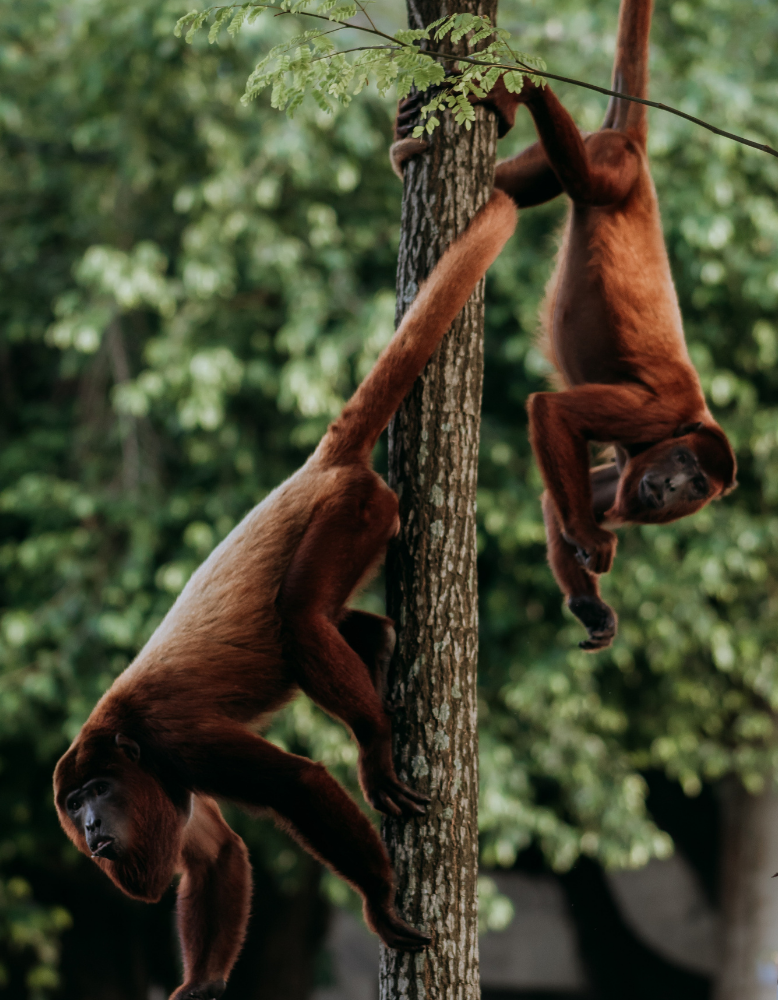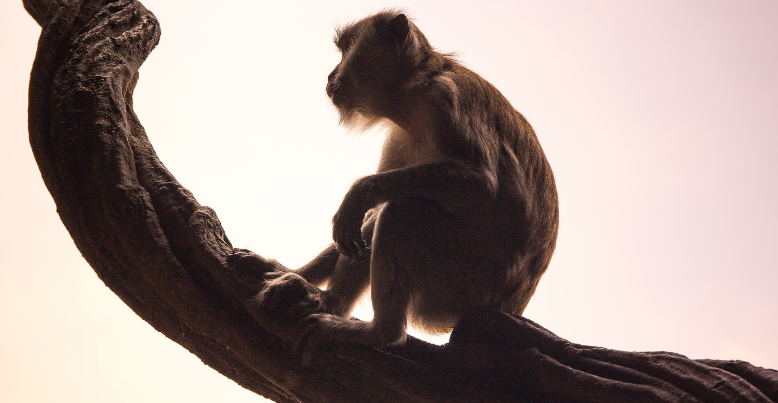
By Christine Song
Environmental Scientist
This is a great question!
Great question! The word prehensile originates from the Latin word prehendere, which means to seize or grasp. Thus, a prehensile tail describes tails that are capable of grasping. Besides tails, other body parts can be prehensile. Humans have prehensile hands, some birds have prehensile feet, and elephants have prehensile trunks!
Not all monkey species have prehensile tails. Let’s get into a tale about tails and explore the few different tail types that monkeys can have.

No visible tail
All monkeys have visible tails except for the Barbary macaque (Macaca sylvanus).
Fun fact: Apes do not have tails either. If you see a primate without a tail, you automatically know that it’s either an ape or a Barbary macaque!

Non-prehensile tail
Non-prehensile tails are unable to grasp. However, they do serve an important purpose to help monkeys balance during movement. If you have seen videos of monkeys while they walk, you might notice that they sway their tails from one side to another to keep their balance, mainly while walking on tree branches.
While some non-prehensile tails are short, length is not always an indicator if a tail is prehensile or not. For example, the appropriately named long-tailed macaque (Macaca fascicularis), seen in the image to the right, does not have a prehensile tail.

Prehensile tail
There are two types of prehensile tails: semi-prehensile and fully prehensile. As the name suggests, both types are capable of grasping. A semi-prehensile tail cannot support the animal’s entire body weight, whereas a fully prehensile tail can.
Many monkey species of the parvorder Platyrrhini, also known as New World Monkeys, have semi- or fully prehensile tails. Similar to non-prehensile tails, this exceptional adaptation helps them balance during movement. The bonus is that the ability to grasp also allows monkeys to use their tail as a 5th limb. Just imagine how much more efficient we could be if we had an extra arm! A prehensile tail comes in handy as monkeys navigate through tree crowns, allowing them to grasp branches to help balance and support.





